Deep Dive
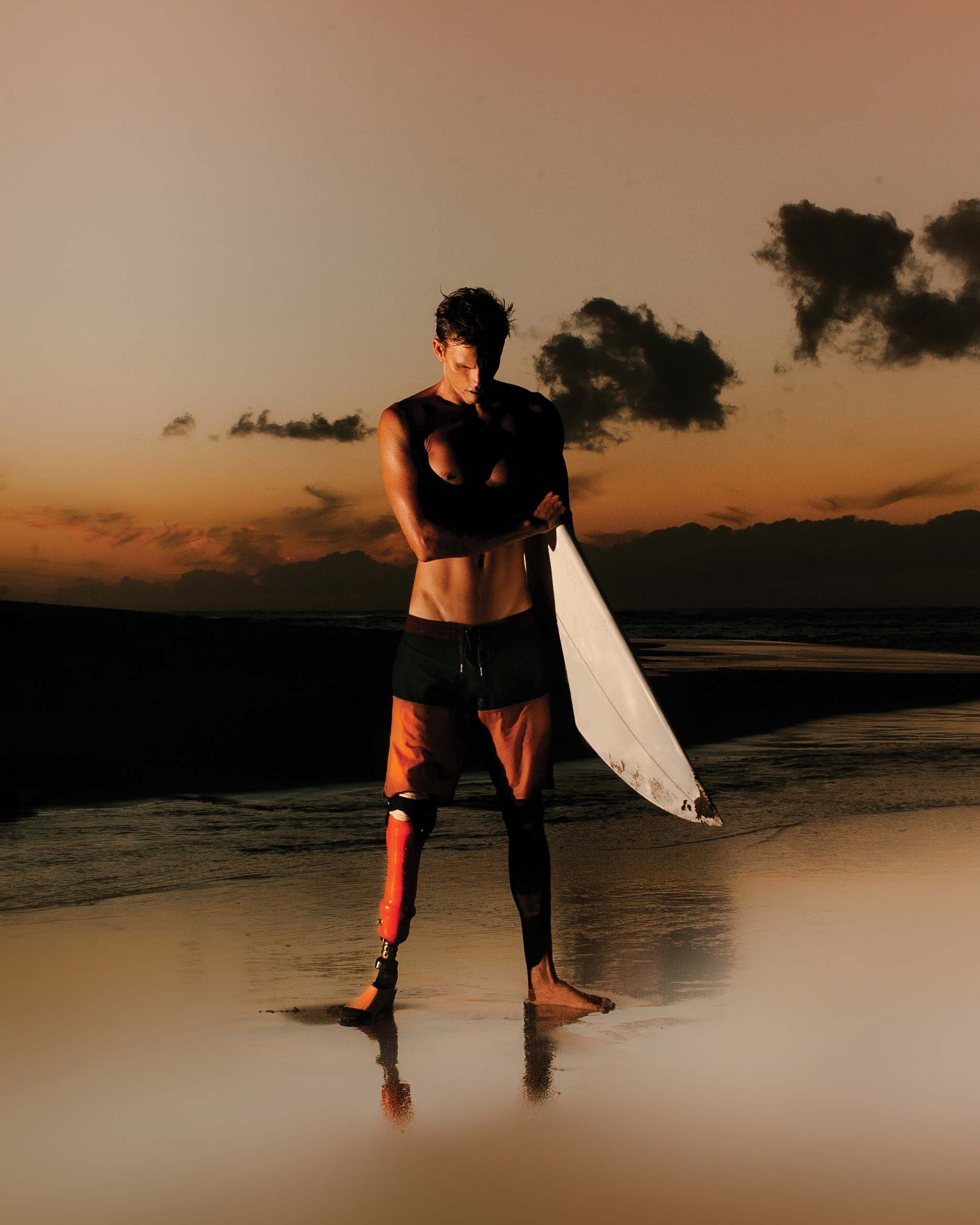
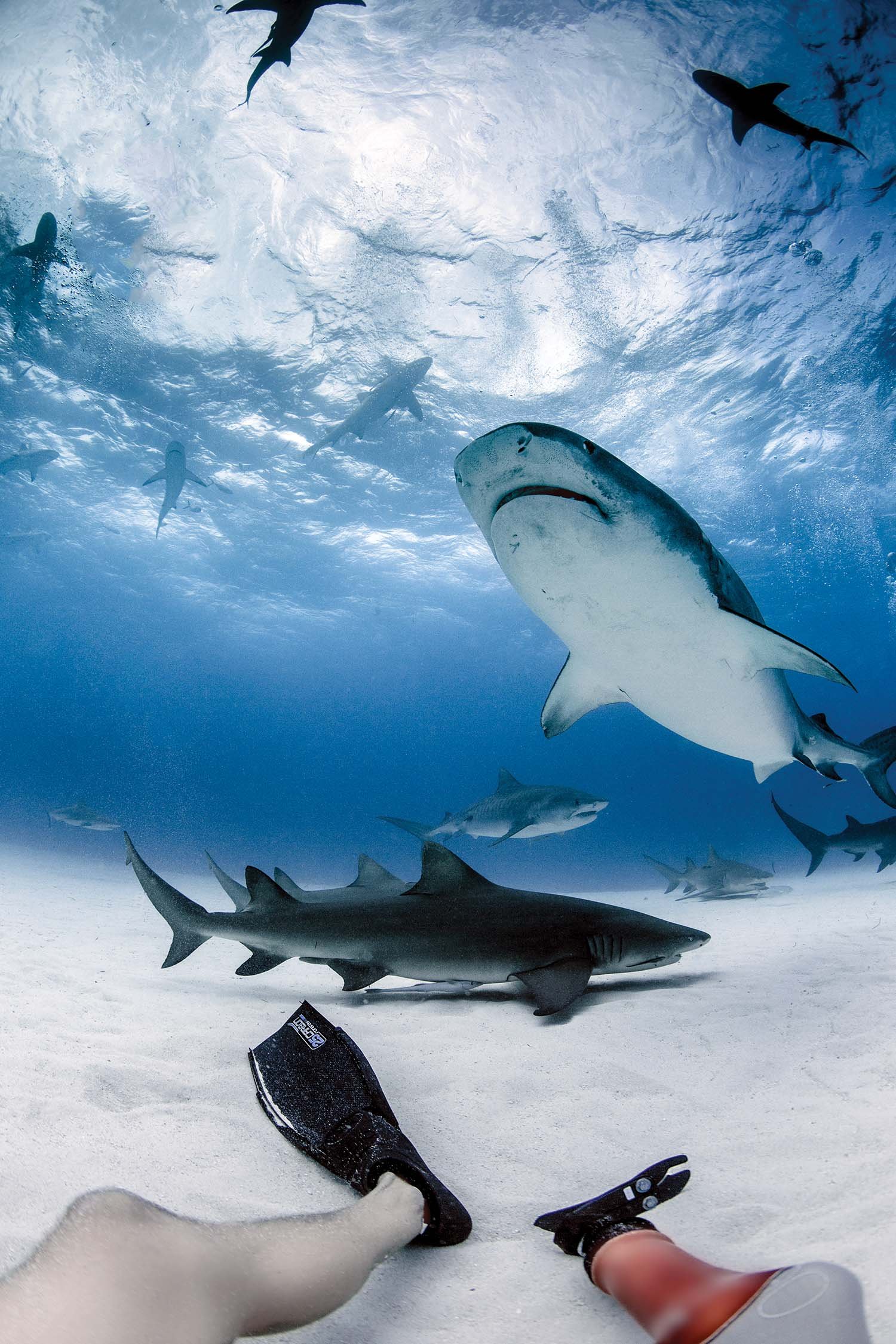
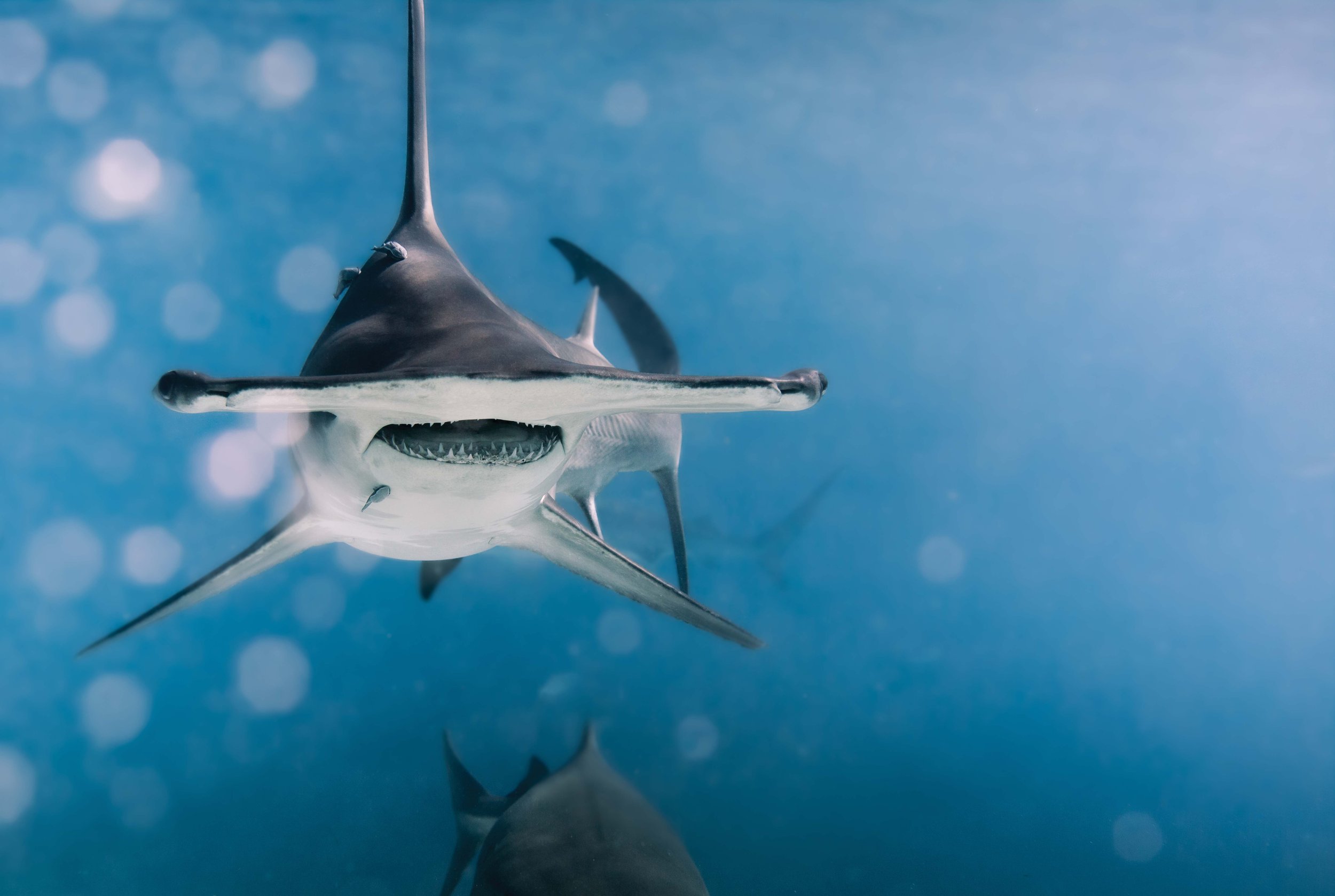
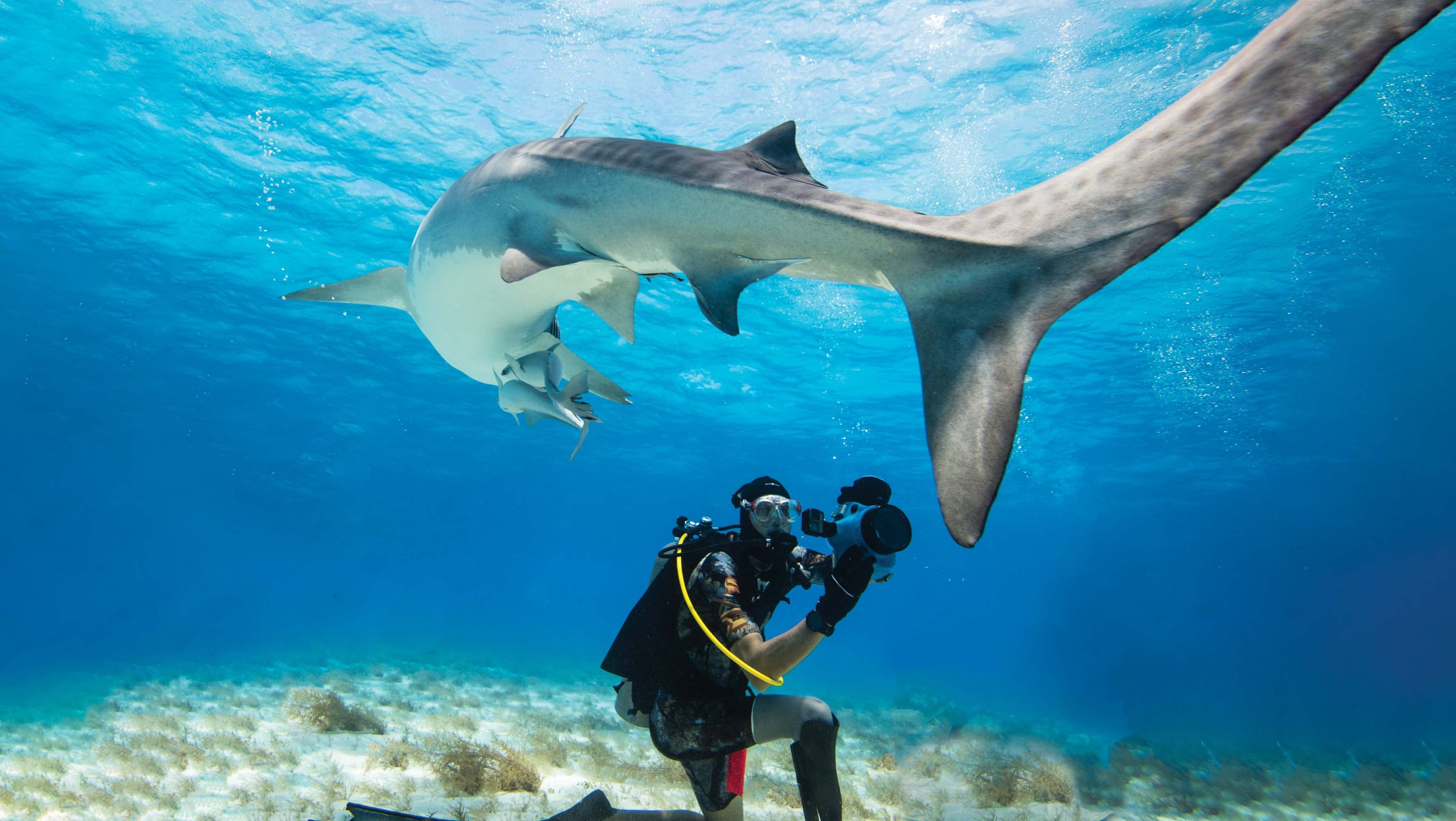
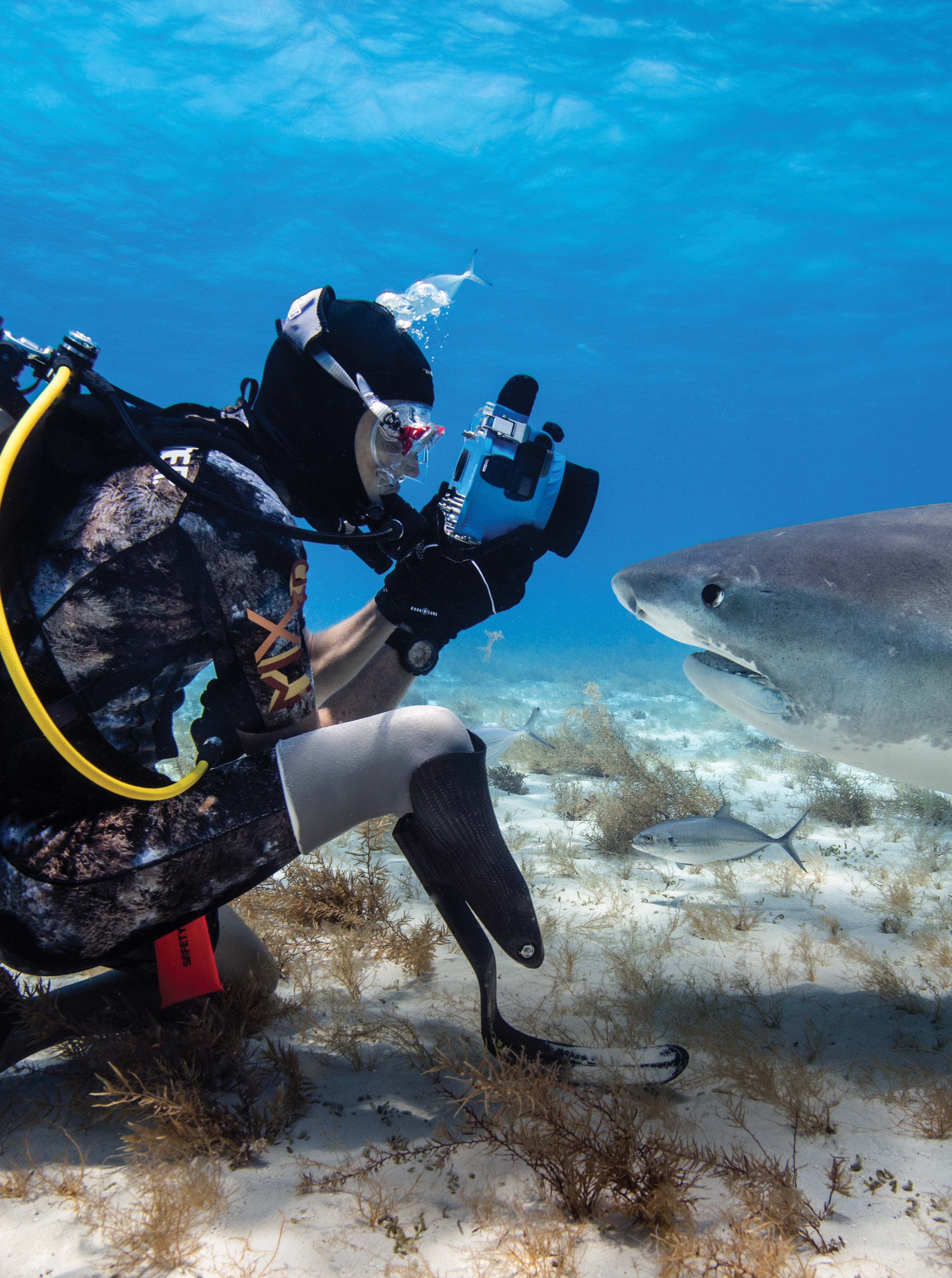
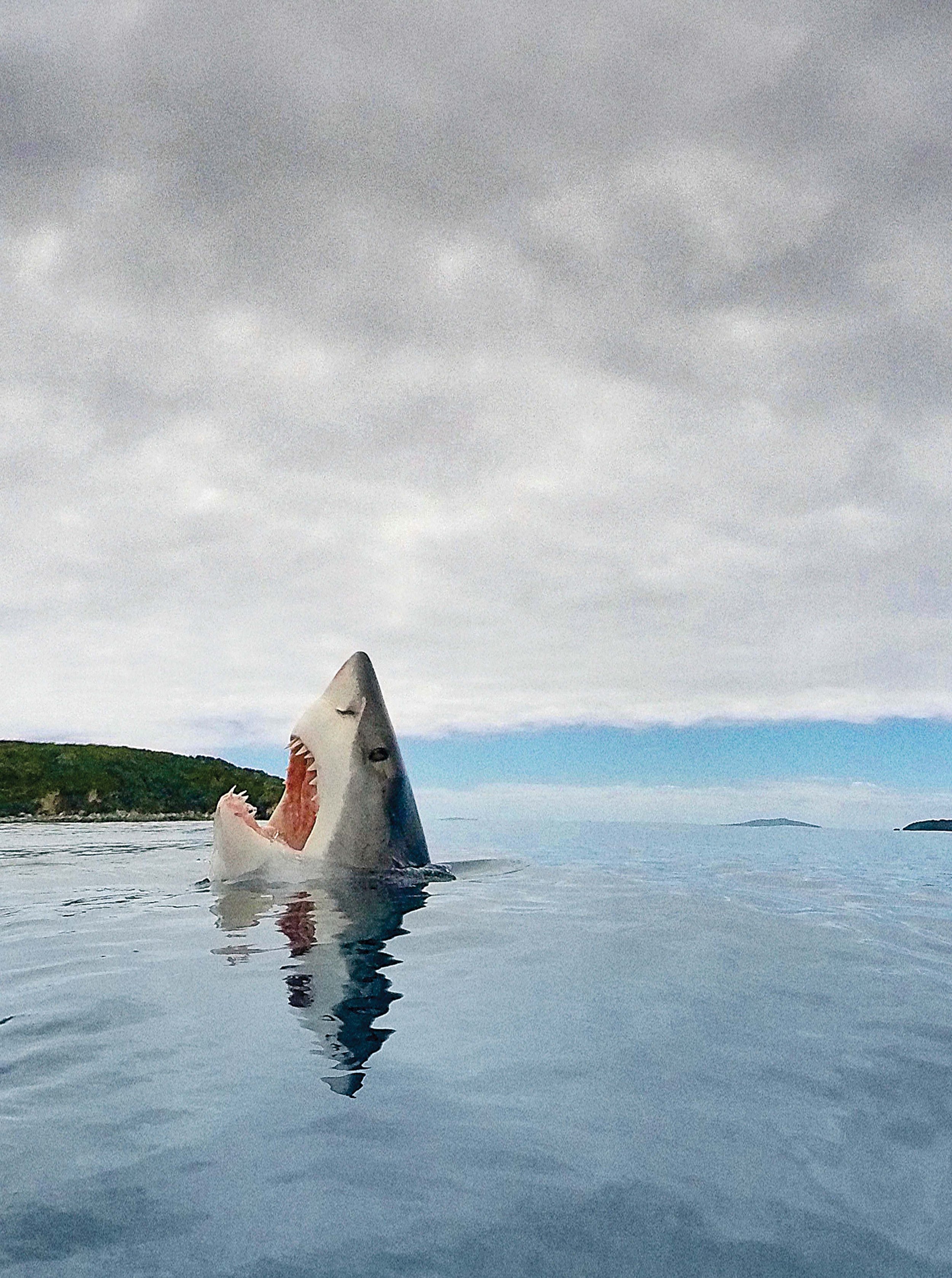
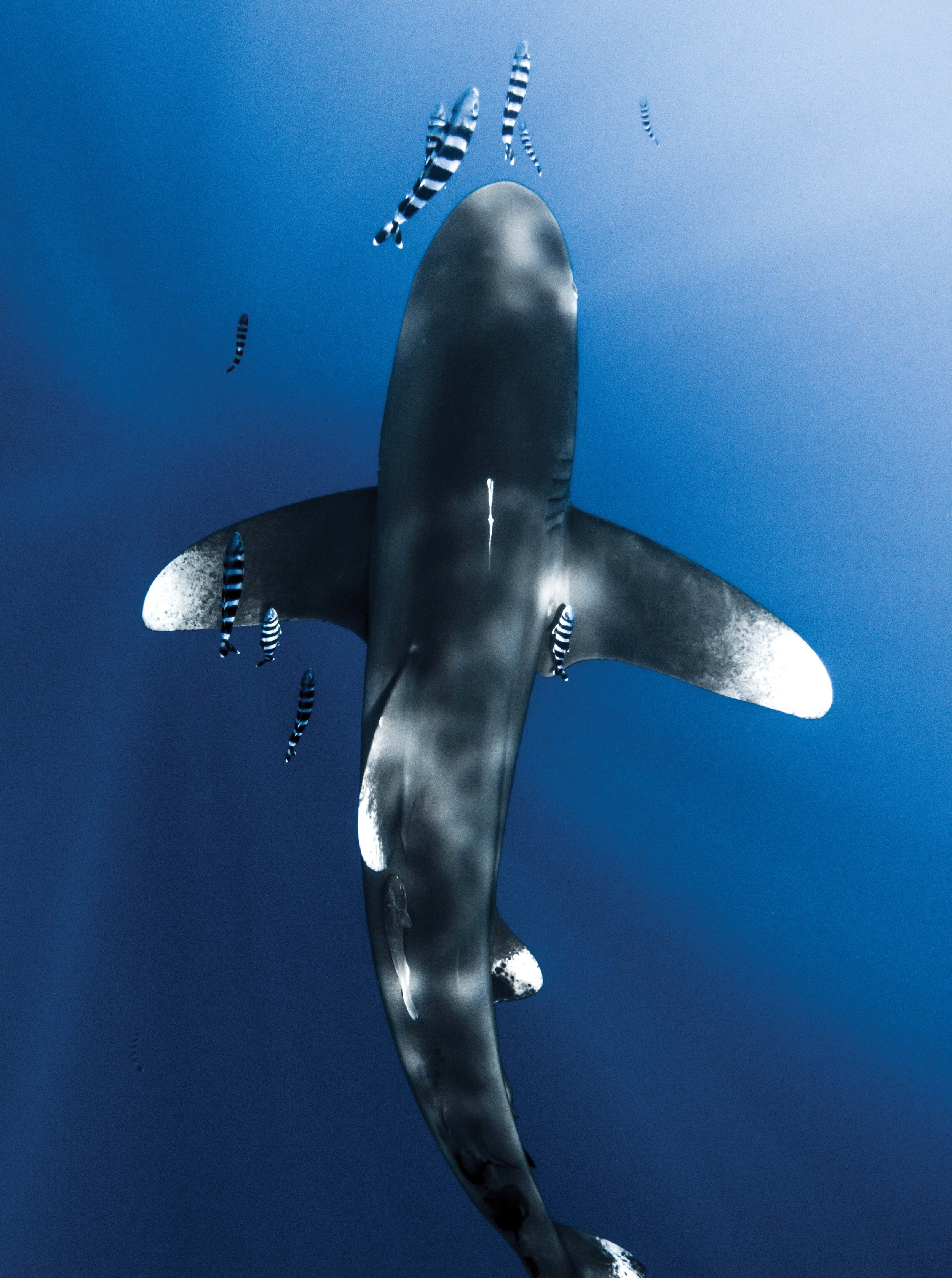
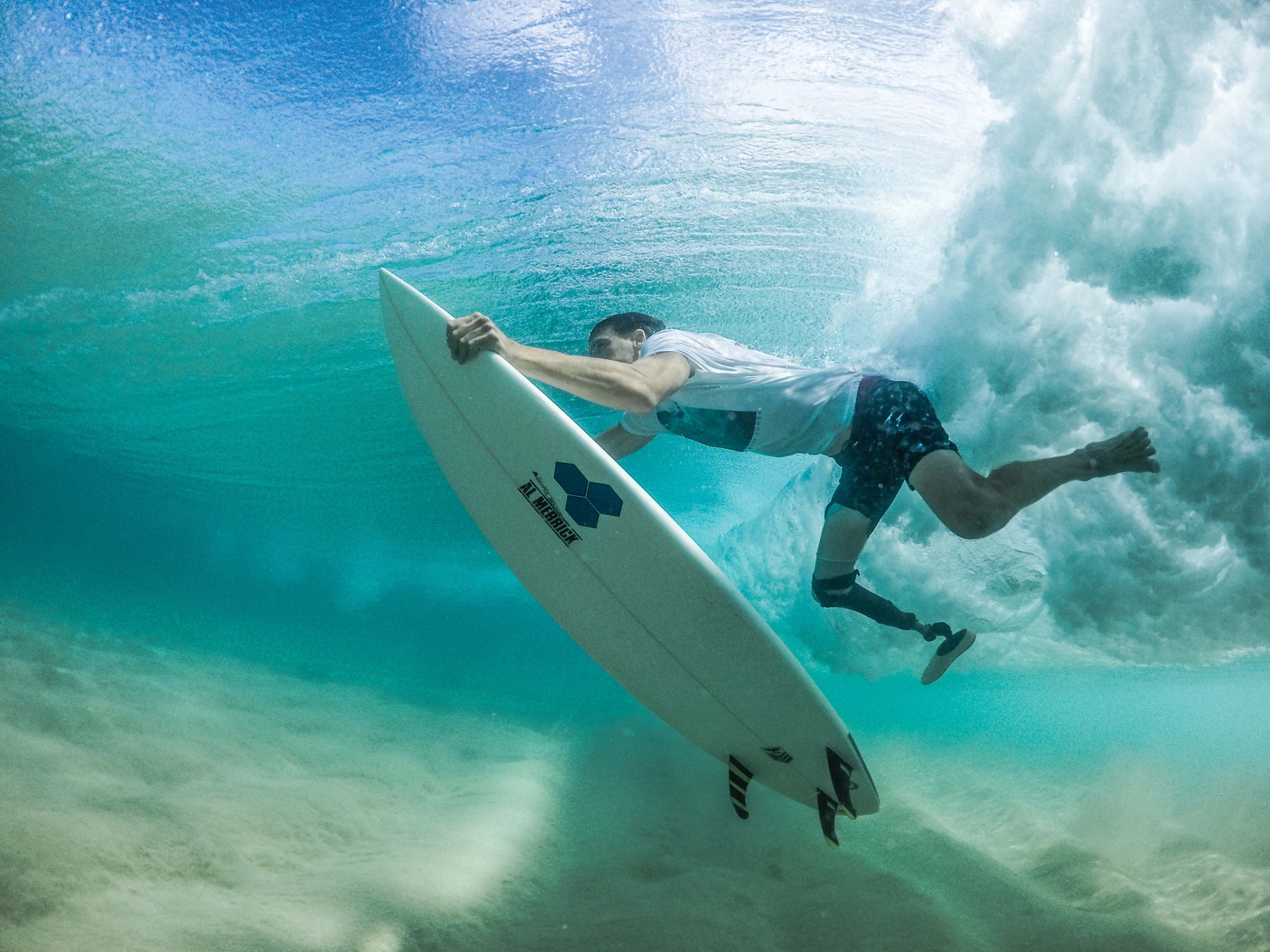
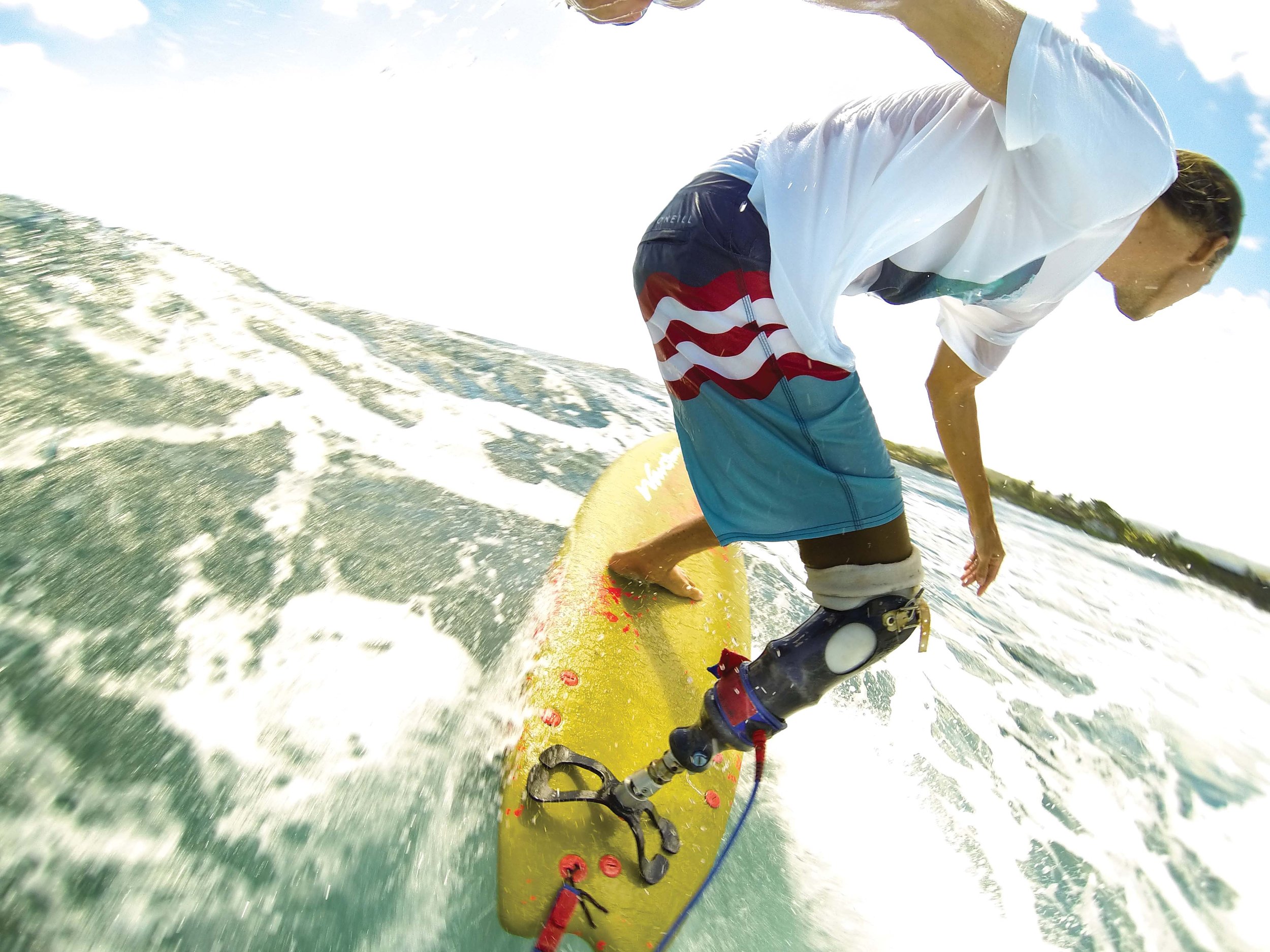
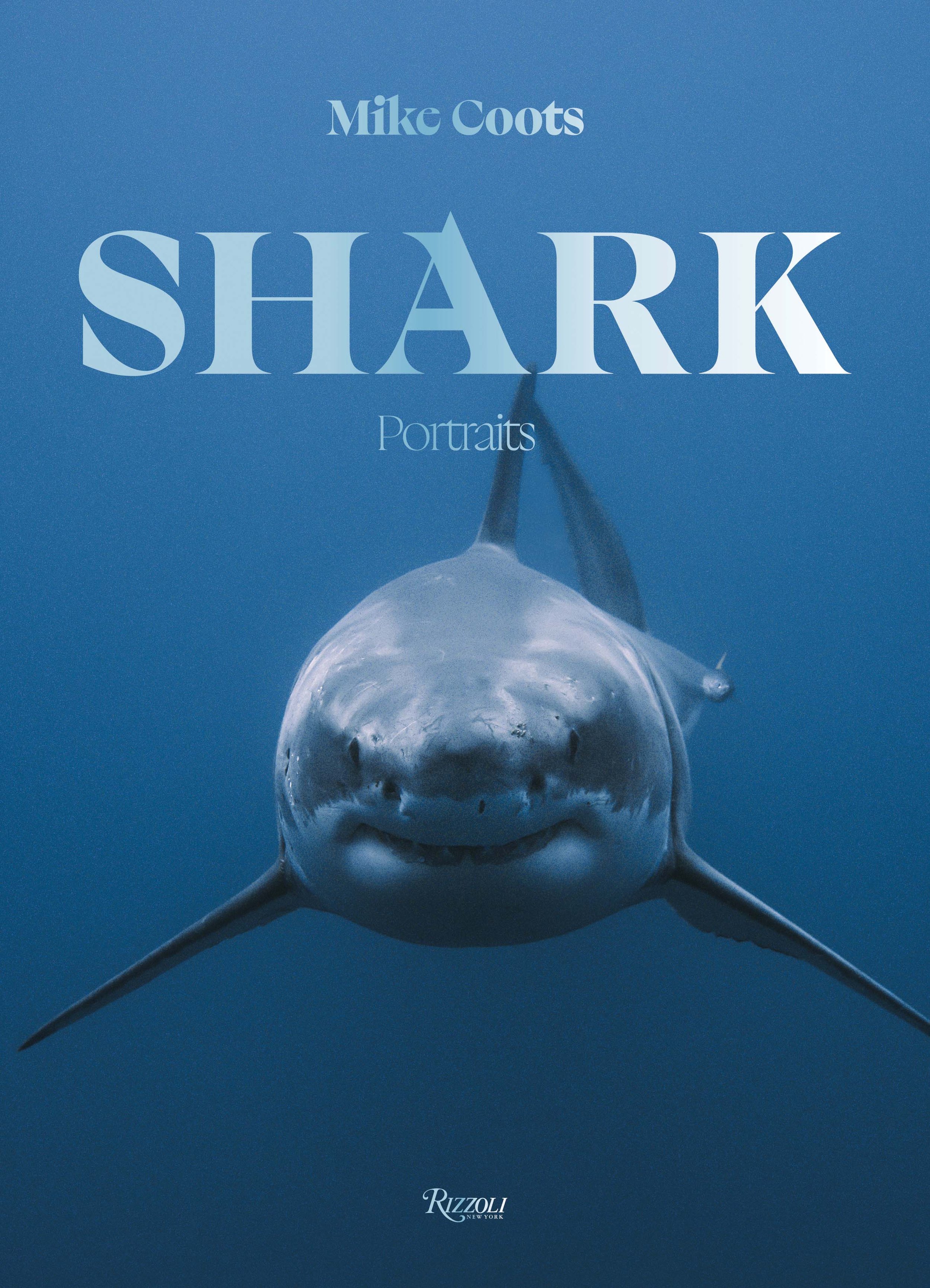
“I felt an immense amount of pressure on both my legs,” recalls surfer Mike Coots after a tiger shark attacked him in the waters off Kaua‘i. “I didn’t see a fin breach … there was no sign of a shark in the area … It was a total blind-sided attack,” he recounts.
“And I remember feeling the pressure getting tighter and tighter, but I didn’t feel any pain or anything at all, just some crazy amount of pressure.”
Coots and his friends had only been surfing no more than 10 minutes before everyone but him had caught a wave. And as he turned to paddle onto his wave, a tiger shark attacked the then 18-year-old.
On that fateful fall day in 1997, Coots and his friends, who were all training to become professional surfers and bodyboarders, found the waves pumping at Major’s Bay on Kaua‘i’s west side. After a dry summer with no surfable waves, they were stoked by the big swell hitting the island that October morning.
Upon arriving at the beach, Coots remembers a horrible stench of dead fish filling the vehicle when they exited their 4x4. “It was like having a freezer full of fish, and the electricity went out for days and days … it was that smell.” They sensed something wasn’t right, but after seeing several other surfers already hitting the waves, they rushed in to join the action.
As Coots sat on his board ready to paddle onto his wave, the shark latched onto his leg and violently thrashed about. Panicked, Coots reached into the shark’s mouth slicing his hand to shreds but freed himself after punching the shark in the nose. Coots remembers seeing the square nose and figured it was a tiger shark.
After getting away, Coots turned towards his surf buddy, who had turned ghost white, and yelled “shark!” and rushed to get to the beach. “And as I’m paddling, my right leg starts to spasm, like this uncontrollable shaking that I’ve never felt before, and I thought it was the shark finishing me … so, I turned around thinking I’d see the shark, but it wasn’t that … it was my leg … it was severed right off.”
Once on the beach, he saw his blood squirting out with each heartbeat. His friend, Kyle, made a tourniquet out of a surf leash that likely saved his life. A stranger on the beach who witnessed the attack drove his pickup truck down the sand where Coots was laying, loaded him onto the bed, and rushed him to the nearest ER.
With everything happening so fast, nobody thought to jump into the bed of the truck with Coots, so he rode alone.
Coots remembers going in and out of shock in the back of the truck as they rattled down the road. He fiddled with a surfboard that was next to him to keep him from thinking about his grotesque injury. Once they arrived at the hospital, medical staff rushed to the pickup and Coots collapsed in their arms, awaking days later with his parents at his bedside.
After weeks in the hospital, Coots knew his dream to become a professional bodyboarder was over, and he feared he’d be stuck in a wheelchair the rest of his life. He didn’t know anything about prosthetics, but after several weeks in the hospital, a visitor came to the hospital to see him and Coots recalled he was wearing long pants.
After he left, his mom explained that the visitor was also an amputee and he was wearing a prosthetic leg and, like him, he’d be fitted for one and would be able to walk again.
‘‘I remember just thinking, ‘Woah, I’m gonna have something … I thought I was gonna be in a wheelchair … I’m gonna have something that’s gonna help me walk around.’”
Coots was fitted with a leg and in just over a month after the attack that changed his life, he was able to jump back into the ocean near the very spot where he came close to losing not just his leg, but his life.
“The waves happened to be good that day and it felt so incredible. I just remember putting away the crutches and sliding into the water and how amazing that felt.”
With his prosthetic leg limiting his job opportunities, Coots turned to photography and was accepted to the prestigious Brooks Institute of Photography in California, where he trained as a portrait photographer. He started working as a photographer after graduation, Mike’s love for the ocean and Kaua‘i led him back home, where he launched a successful career working for clients such as Quiksilver, The New York Times and GoPro.
As his photo career was growing, a fellow amputee introduced Coots to the world of conservation and invited himto do a shark dive, which put him face to face with the animals that almost took his life. The shark dive was in the waters off Guadalupe Island in Mexico, and he photographed great white sharks swimming all around him.
After the dive, “I remember plugging in my memory card into my laptop and looking at my photos for the first time and thinking this was freaking amazing.”
Coots immediately booked another shark trip and headed to Tiger Beach in the Bahamas to dive with tiger sharks. The experiences turned his life around, and he began using his photo skills for ocean and shark conservation work.
It became his mission to change the perception of sharks around the world.
“Hollywood and the media have demonized sharks for decades,” Coots decries. “But without sharks in our ocean, we don’t have an ocean nor a healthy planet.”
Coots has done shark dives in the Bahamas, Australia, New Zealand, the Maldives and Hawai‘i. While he uses professional underwater equipment, Coots takes an unorthodox approach of using telephoto lenses more suitable for portraiture, allowing him to isolate his fishy subjects and capture their character. His technique gives his work a more intimate feel.
“It’s almost like I’m shooting sharks like I’m shooting people,” he says.
“I think I subconsciously edit my images to find some human traits in the sharks whether it’s a smirk, a smile, or a little bit of humor because we can see a little bit of ourselves, and it makes us want to learn more about it.”
Coots says he does have a healthy fear of sharks but that hasn’t stopped him from taking the plunge with them. He has had several rather close encounters including an attacking great white shark near Guadalupe Island and a tiger shark nibbling on his prosthetic in the Bahamas.
Clearly the loss of a limb didn’t keep Coots from tempting fate again. But according to him, he never had any flashbacks or regrets.
“I never had a bad dream about sharks … I guess I’m fortunate like that.”
Coots is happy to use his photo skills to educate the world about sharks, and he has no problem being known as the “shark guy.” He hopes his portraits will change the perceptions about sharks and hopes people will view them as they would dolphins and whales.
Since the shark attack that changed his life, Coots had other close calls in his life, but still feels he is fortunate to be alive and share his love of sharks and the ocean with the world.
“I should have drowned a few years back, but I feel a strong sense of purpose for why I’m on this Earth and why I have this bond with sharks.”
People often ask Coots if he’d still go surfing that fateful morning knowing that he’d get attacked. “I would absolutely still paddle out, because it’s been an incredible ride; my life has been pretty damn incredible.”
Coots’ 240-page coffee table book, Shark: Portraits, will be released in September 2023, published by Rizzoli. The book contains more than 200 photos taken over a 12-year journey of his most endearing fish. sharksbymikecoots.com
